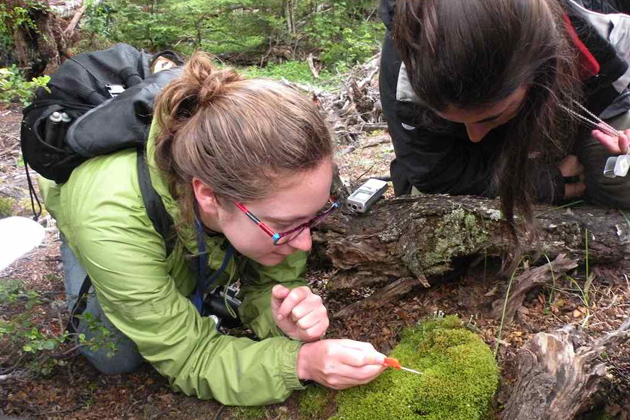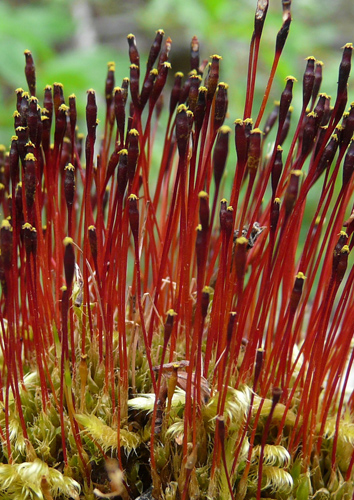
Ecology and evolutionary biology Ph.D. student Lily Lewis has been selected as one of 22 recipients of the 2013 national Robert and Patricia Switzer Foundation fellowship for her work in conservation and environmental biology.
The award recognizes graduate students in a range of fields whose studies are directed toward improving environmental quality and who show the potential to be leaders in their field. The program provides a one-year graduate stipend, and leadership workshops and trainings for new and previous fellows.
“Lily’s work will enable others to broaden their view of the living world, further their thinking, and develop a more holistic view of our environment in their quest to seek solutions to environmental threats,” says Bernard Goffinet, professor of ecology and evolutionary biology and Lewis’s dissertation advisor.

Lewis’s interests focus on a group of plants called bryophytes, which don’t have the conventional vascular tissue that transports water in most plants. The most commonly recognized member of the group is the mosses, which Lewis has studied in the far reaches of the Alaskan wilderness and the Chilean sub-Antarctic mountains.
“If you turn on the Discovery Channel, you see things like polar bears, which are magnificent creatures,” says Lewis. “You don’t see things like bryophytes. But when you start looking a little closer, then you’ll realize they are really interesting and beautiful.”
Bryophytes, Lewis explains, are often found in areas where other plants don’t typically grow, such as the far north and south regions of the Earth and at very high elevations in the mountains. In sub-Antarctic Chile, for instance, there are only five species of trees, which has in the past led biologists to declare these areas to have low biological diversity.
“But if you look at the bryophytes, there is actually a great diversity of species,” says Lewis.
A “poster child” for bryophytes is sphagnum, or peat moss, she says. In many high-latitude, high-elevation environments – the Arctic tundra, for example – these mosses can cover the landscape and regulate water flow through the ecosystem. And just like tropical rainforests, they sequester carbon from the atmosphere, which makes preserving them climatically important.
“I want to counteract the perception that these areas are biologically depauperate,” she says. “I hope to take my knowledge of bryophytes and apply it to work in conservation planning.”
Lewis has co-authored two books on bryophytes that emphasize ecotourism with the use of a hand lens, a small magnifying glass used by botanists to look closely at small plant parts. Some bryophytes, like the dung mosses she studies, have colorful, odd-shaped structures that hold their spores. These structures make them very different from other types of plants, she says, and if they’re looked at carefully, they can be just as inspiring as the trees and flowers all around us.
“I see the forest as a library, with each species having a story to tell, and each contributing to our understanding of the evolution of our natural world and its function,” says Goffinet. “A library is only useful if people enter the building and open their eyes. Through her insightful stories, Lily opens the doors and engages visitors to explore and learn about the world around them.”
The fellowship is especially exciting, says Lewis, because it emphasizes communications and outreach related to the environment. The program hosts a series of workshops where fellows learn how to communicate environmental concepts to policymakers and to the press. She also anticipates that the network of past fellows will be invaluable in helping her make career connections in government and non-profit organizations.
Lewis came to UConn to work with Goffinet, a world-renowned bryologist in the ecology and evolutionary biology department. Goffinet emphasizes the interface between academia and applications of research to the general public, which is especially important to Lewis and her career.
In the lab, Lewis is supervising three undergraduates, who have helped develop a protocol to determine how bryophytes’ reproductive units, called diaspores, manage to travel between the far north and the far south of the Earth. Using feathers gathered from migratory shorebirds, they are investigating the as-yet-untested hypothesis that migratory shorebirds disperse bryophytes between the poles.
“Lily is bringing a new methodology to the lab and improving my skills to communicate with the world outside of the lab,” says Goffinet. “She is an inspiration to undergraduates and I value her dedication to creating research opportunities for them.”



